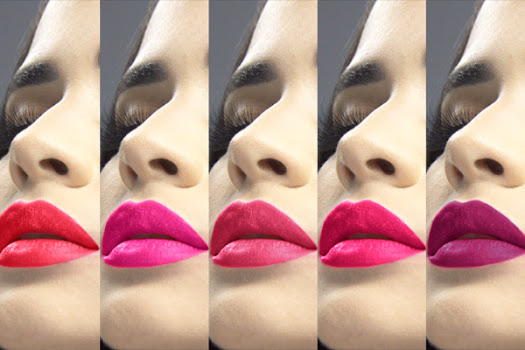Title: What is Picture Color Change in Photoshop?
Introduction
In the world of digital image editing, Adobe Photoshop stands as an iconic powerhouse. It offers an array of tools and features that allow creative individuals to manipulate and enhance their photographs in remarkable ways. Among its diverse capabilities, one that deserves special attention is the ability to change the colors in pictures. Whether you're a professional photographer seeking to correct color imperfections or a digital artist exploring the boundaries of creativity, Photoshop provides an extensive toolbox for altering and enhancing picture colors. In this comprehensive article, we will delve into the fascinating world of picture color change in Photoshop, exploring techniques, tools, and tips that can help you master this art.
Understanding the Fundamentals
Before we embark on our journey through the techniques of picture color change, it's essential to grasp the foundational concepts behind color manipulation in Photoshop. At the heart of this digital transformation lies the RGB (Red, Green, Blue) color model, the standard used for representing colors in digital images.
In the RGB model, colors are created by combining various proportions of red, green, and blue light. Photoshop provides you with the tools to manipulate these color channels, allowing you to change colors in your pictures effectively.
Methods of Changing Picture Colors
Adjustment Layers: The Non-destructive Approach
Adjustment Layers are a fundamental component of non-destructive editing in Photoshop. They allow you to apply color changes without permanently altering the original image. These layers come with various adjustment options, but some of the most frequently used for color adjustments are "Hue/Saturation," "Color Balance," and "Gradient Map."
Hue/Saturation: This adjustment enables you to shift the hue (color), adjust saturation (intensity), and modify the lightness of the image. It's a versatile tool for making subtle or drastic color changes.
Color Balance: Color Balance adjustment lets you fine-tune the balance of colors in your image, separately adjusting tones in the shadows, midtones, and highlights. It's particularly useful for correcting color casts or achieving specific color effects.
Gradient Map: Gradient Maps provide a creative way to map the tones in your image to a gradient of colors. This technique is often used for artistic and surreal color transformations.
Color Replacement Tool: Precision Color Alteration
The Color Replacement Tool is a precise instrument that allows you to change a specific color in your image to another color of your choice. You can adjust the tool's tolerance and blending mode to control the range and blending of the replacement color. It's ideal for tasks like changing the color of clothing or objects within a photo.
Selective Color: Targeted Color Adjustments
Selective Color adjustment offers granular control over specific colors in your image. You can adjust the levels of individual color channels like reds, greens, blues, and more. This is especially useful for enhancing or altering the color of specific elements without affecting the entire image.
Gradient Maps: Artistic Transformations
Gradient Maps aren't just for simple color changes; they are versatile for creative color transformations. By mapping tones to custom gradients, you can achieve striking artistic effects such as duotones or complex color grading.
Channel Mixer: Channel-Level Control
The Channel Mixer allows you to manipulate individual color channels (red, green, blue) of your image. This can be used to create custom color combinations or convert images to grayscale while retaining specific color characteristics.
Brush Tools: Manual Color Adjustment
For precise and manual color adjustments, Photoshop's brush tools, including the Brush and Pencil, can be used with custom color settings. This method is perfect for retouching and adding subtle or specific color effects to your images.
Tips for Effective Picture Color Change
Mastering picture color change in Photoshop requires practice and an understanding of the nuances involved. Here are some tips to help you achieve effective and impressive results:
Work Non-Destructively: Always use Adjustment Layers when possible. This allows you to make changes without altering the original image, preserving its integrity.
Use Masks: Masks allow you to control where your color changes are applied. By using masks, you can selectively apply color adjustments to specific areas of your image.
Experiment with Blending Modes: Blending modes can produce unique color effects when combined with adjustment layers or brush tools. Experiment with different modes to achieve desired results.
Understand Color Theory: A fundamental understanding of color theory can greatly assist in making informed color adjustments. Familiarize yourself with concepts like complementary colors, color harmonies, and color temperature.
Save Your Work: Regularly save your Photoshop project files (PSD) with layers intact. This allows you to revisit and refine your color adjustments at any time.
Conclusion
Photoshop's capacity to change picture colors is nothing short of magical. It empowers artists, photographers, and designers to unleash their creativity and transform ordinary images into extraordinary works of art. From simple color corrections to complex and imaginative color manipulations, Photoshop offers an extensive toolbox to cater to your every need. Remember that becoming proficient in picture color change requires practice, experimentation, and a willingness to push the boundaries of your creativity. Embrace the power of Photoshop, and you'll unlock a world of possibilities in the realm of color manipulation and image enhancement.





Comments
Post a Comment